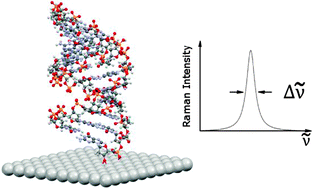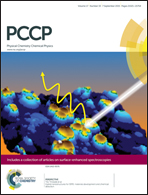Subpicosecond surface dynamics in genomic DNA from in vitro-grown plant species: a SERS assessment
Abstract
In this work the surface-enhanced Raman total half band widths of seven genomic DNAs from leaves of chrysanthemum (Dendranthema grandiflora Ramat.), common sundew (Drosera rotundifolia L.), edelweiss (Leontopodium alpinum Cass), Epilobium hirsutum L., Hypericum richeri ssp. transsilvanicum (Čelak) Ciocârlan, rose (Rosa x hybrida L.) and redwood (Sequoia sempervirens D. Don. Endl.) have been measured. We have shown that surface-enhanced Raman spectroscopy (SERS) can be used to study the fast subpicosecond dynamics of DNA in the proximity of a metallic surface. The dependencies of the total half band widths and the global relaxation times, on the DNA molecular subgroup structure and on the type of genomic DNA, are reported. In our study, the full widths at half-maximum (FWHMs) for the SERS bands of genomic DNAs from different leaf tissues are typically in the wavenumber range from 15 to 55 cm−1. Besides, it can be observed that molecular relaxation processes studied in this work have a global relaxation time smaller than 0.71 ps and larger than 0.19 ps. A comparison between different ranges of FT-Raman and SERS band parameters, respectively, corresponding to DNA extracted from leaf tissues is given. It is shown that the interaction between DNA and a metallic surface has the potential to lead to a shortening of the global relaxation times, as compared with molecular dynamics in solution. We have found that the surface dynamics of molecular subgroups in plant DNA is, in some cases, about two times faster than the solution dynamics of nucleic acids. This can be rationalized in a qualitative manner by invoking the complex landscape of the interaction energy between the molecule and the silver surface.

- This article is part of the themed collection: Surface-enhanced spectroscopies

 Please wait while we load your content...
Please wait while we load your content...